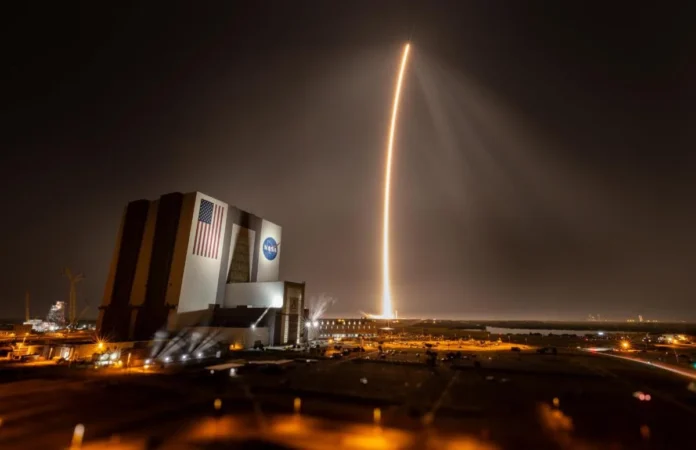NASA’s Mission to Test Technology for Long-Term Human Stay on Moon
NASA has taken a monumental step toward establishing a sustained human presence on the Moon. As part of the Commercial Lunar Payload Services (CLPS) initiative and the broader Artemis campaign, the latest mission aims to test innovative science and technology experiments crucial for long-term lunar habitation.
A Giant Leap for Lunar Sustainability
On February 28, Intuitive Machines’ IM-2 mission launched aboard a SpaceX Falcon 9 rocket from Kennedy Space Center, Florida. The lunar lander is scheduled to touch down on March 6 at Mons Mouton, a plateau near the Moon’s South Pole. This mission serves as a critical milestone in preparing for long-duration astronaut expeditions beyond the Moon.
According to NASA’s acting administrator Janet Petro, each CLPS mission strengthens the United States’ leadership in space. She emphasized that these science and technology demonstrations lay the groundwork for future explorers who will live and work on the Moon.
Cutting-Edge Technology for Sustained Lunar Habitation
This lunar mission is packed with advanced instruments designed to enhance lunar research and habitation capabilities. Key technologies being tested include:
- Lunar Soil Gas Analysis – Scientists will study gases present in the Moon’s soil, providing insights into potential resource utilization for long-term stays.
- Laser Retroreflector Array – This system will serve as a navigation marker, helping spacecraft pinpoint locations on the lunar surface with high precision.
- Enhanced Surface Communications – A new communication system will demonstrate improved signal transmission between the Moon and Earth, a crucial component for sustained lunar presence.
- Propulsive Drone Deployment – A specialized drone will hop across the lunar surface, showcasing mobility solutions for lunar settlers.
Mapping the Moon’s Water with Lunar Trailblazer
In addition to the IM-2 mission, NASA’s Lunar Trailblazer spacecraft has begun its journey to orbit the Moon. This mission is designed to map the distribution of water, analyze its different forms, and track how it changes over time.
Over a two-year prime mission, scientists will leverage Lunar Trailblazer’s data to deepen their understanding of water cycles on airless bodies like the Moon. These insights will play a crucial role in supporting future human and robotic missions by identifying viable water sources for long-term lunar habitation.
Advancing the Artemis Vision for Sustainable Lunar Living
The Artemis program is central to NASA’s long-term goal of enabling humans to live and work on the Moon. By testing cutting-edge technology, gathering crucial data, and leveraging industry partnerships, NASA is ensuring that future explorers can establish a sustainable lunar presence.
With each mission, NASA is bringing humanity one step closer to deep-space exploration, including eventual crewed missions to Mars. The advancements from the CLPS initiative, Artemis campaign, and related lunar habitation projects underscore NASA’s commitment to expanding human reach into the solar system.


